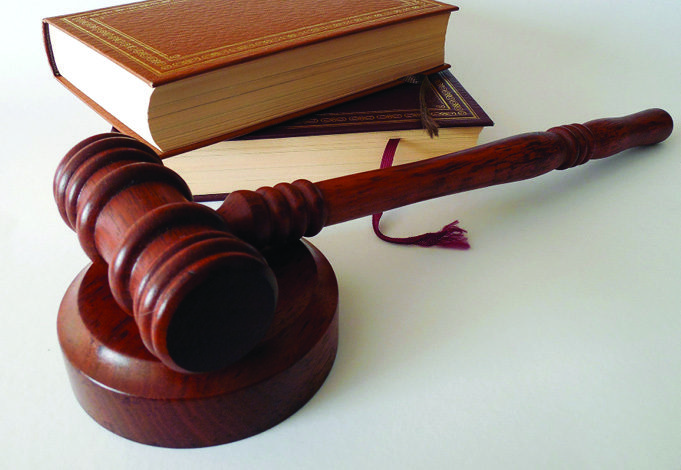The word “discipline” has several definitions, including the positive description of exhibiting a orderly conduct and behavior in accordance with expected standards. Additionally, it may also describe a process for dealing with behavior that does not meet those expected and communicated performance standards and the potential consequences for not behaving as expected. It’s the latter connotation we will examine more fully as it pertains to your association’s need to maintain order.
The key to any discipline procedures your local association might employ is having a very clear set of expectations for behavior and conduct. Those “rules” will be in line with your association’s goals or objectives and become the basis for disciplinary actions when the rules are broken. Those rules may be laid out in the form of association bylaws, a published code of expected conduct, or even something as simple as a “do-don’t” list in the context of an officials’ handbook. Along with the rules, the consequences for non-compliance should also be articulated. Until and unless your members have the opportunity to know what standards they’re expected to follow, any discipline meted out will be capricious and subject to dispute.
For all manners of discipline, and especially with adults, a model of progressive discipline appears to work best. Progressive discipline is characterized by using a tiered set of consequences designed to get your member’s attention so that he or she understands that a performance problem or opportunity for improvement exists, and understands that continued non-compliance will result in more severe consequences. The following is an example of such a progressive model.
Verbal warning
Usually, the first tier of discipline is a verbal warning (“Hey, Jim … you missed that mandatory meeting last Tuesday. Remember there’s a make-up session this Wednesday.”). That amounts to an informal notification that something’s amiss — and provides a means to set things straight again.
Reprimand
The next level will be a written notification, clearly identified as a “letter of reprimand,” informing Sue that her annual dues payment is late. That is a formal notification that (a) becomes an association record, and (b) informs Sue that additional sanctions are possible if she doesn’t write a check soon.
Probation
The third level of discipline is the notification of probation, which is a predetermined period during which the member and his or her behavior/activity is scrutinized. Implicit in probation is an expectation of proper conduct and behavior and potentially escalating penalties. That is, during probation, what might have earned a verbal warning under normal circumstances may lead to harsher penalties. Rich has failed his rules test for two straight seasons and you’ve notified him that he’s been put on probation. You may set that up to limit scrutiny to Rich’s rules test score next year, or you might want to expand it to cover Rich’s adherence to all membership standards. Setting the example aside for a moment, a lot of that decision-making will depend upon the infraction. Regardless of how you might set up probation, your notification must inform Rich of exactly what’s expected and also inform him that failure to comply with terms of the probation will potentially result in more serious consequences.
A higher level of disciplinary consequence will be suspension, a temporary revocation of the rights and privileges of membership in your association. Often that will be equivalent to suspending the member’s opportunities to actually officiate. That revocation may be for a month, two months or an entire season depending on the violation of conduct.
Finally, when everything else has failed to correct the issue, the nuclear option —expulsion, which represents a permanent revocation of association membership and with it most likely, the ability to officiate games.
Depending on how your association is constituted, you may have other potential ways of dealing with members who have difficulty keeping up. Some associations place officials into classification levels reflecting experience, performance on tests, field observations, etc. For those, a potential way for dealing with issues of performance is demotion to a lower classification — either temporarily or permanently. That would come after attempts to work collaboratively with an under-performing member have failed. That is obviously more applicable to cases of inadequate performance at a specific level, rather than violation of bylaws.
In order to make all of it real, and to make it functional, you might want to consider establishing a discipline committee, which will gather information related to the member and his/her transgressions, evaluate past history, investigate precedents and ultimately make recommendations to your executive committee (or other governing body) on proposed disciplinary action.
The following guiding principles for carrying out disciplinary action are adapted from University of California at San Francisco’s human resources department:
Maintain a professional manner by keeping the disciplinary process confidential between the association and the member.
Make a careful diagnosis of the problem to determine whether disciplinary action is appropriate
Provide specific examples of performance discrepancies or rule violations so the member fully understands what needs correction.
Allow the member ample opportunity to explain so that you have all facts.
Make sure discipline is the appropriate tool. Would coaching or formal evaluation be sufficient to get the member’s attention?
When you take disciplinary action, make sure the punishment fits the crime.
Help your member improve performance by providing specific recommendations and requirements.
Communicate clearly so the member understands the consequences if performance or conduct does not improve.
If your association desires to have an effective disciplinary procedure, all parties have important roles to play. The association through referendum has the overall responsibility of establishing bylaws. The governing body for the association will communicate rules to members, develop a system for enforcing them and, if desired, establish a disciplinary committee. That committee will be responsible for implementing and executing the discipline procedure, and for recommending action in specific cases brought before it. To the extent that all parties perform their roles effectively, the disciplinary procedure will be effective, well-communicated and understood, and there is a good chance that member non-compliance can be significantly reduced.
This article is for informational purposes only and is not legal advice.
What's Your Call? Leave a Comment:
Note: This article is archival in nature. Rules, interpretations, mechanics, philosophies and other information may or may not be correct for the current year.
This article is the copyright of ©Referee Enterprises, Inc., and may not be republished in whole or in part online, in print or in any capacity without expressed written permission from Referee. The article is made available for educational use by individuals.

















